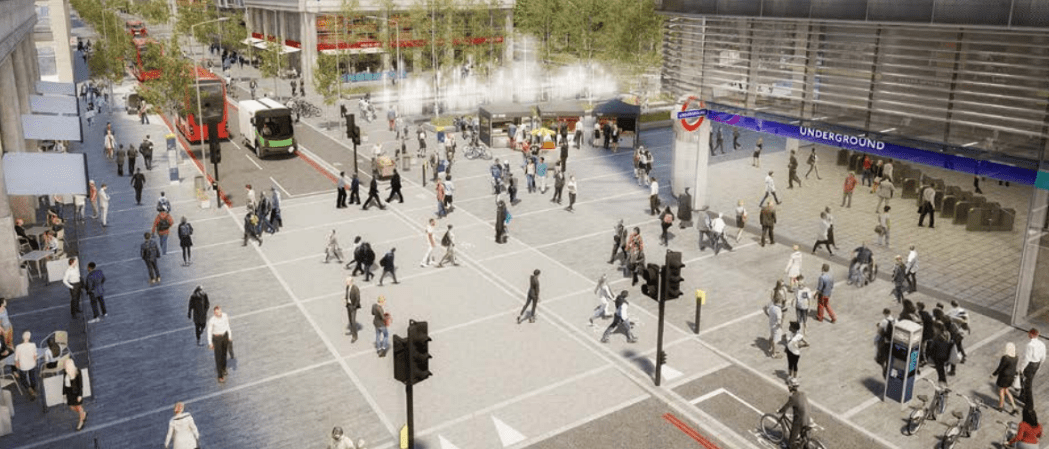London Mayor Sadiq Khan's transport strategy for the next 25 years lays out a vision for how his city, expected to add 1.5 million people by 2041 on top of its current 9 million residents, is planning to keep moving while reducing pollution and improving quality of life. The big idea: Cars are the problem, not the solution.
The report should be a model for any major city. Khan pulls no punches in explaining why he is willing to do big things to reduce car travel, making it a must-read for mayors around the world.
"London’s streets should be for active travel and social interaction, but too often they are places for cars, not people," the report says. "Cars take up a lot of space relative to the number of people they can move around, and reliance on this space-inefficient mode of transport has made London’s streets some of the most congested in the world. This has huge impacts on Londoners -- causing pollution, making streets unpleasant places to be and delaying public transport journeys."
Khan's vision, published in draft form today, focuses on improving the reliability and extent of the rail network, increasing density near transit while drastically reducing the amount of off-street parking, examining a per-mile congestion charge in addition to the existing zone- and pollution-based fee structure, and making the city's transportation system emissions-free by 2050, starting with buses in central London before expanding to taxis and private vehicles throughout the entire city.
One way the mayor plans on cutting car traffic is by restricting parking in new development, with the expectation that construction in transit-rich areas will be parking-free. Meanwhile, transit service will cover more ground and carry more people: In addition to rail extensions, signal upgrades will continue on the London Underground, enabling trains to run about every 90 seconds on the busiest lines by 2023.
The mayor is also launching what he's called the "Healthy Streets Approach" to make streets where Londoners feel comfortable walking and bicycling and get at least 20 minutes of physical activity each day. The goal is to have 80 percent of all journeys by transit, walking, or bicycling by 2041, compared to 64 percent now. The change would reduce car travel in London by 3 million miles per day. To top it off, Khan has embraced a Vision Zero goal to eliminate roadway deaths and serious injuries by 2041.
London's mayor has direct control over rail, buses, and major streets through Transport for London, or TfL. Khan can also shape land use policy and influence policies for smaller, local streets.
However, the mayor is not omnipotent. He relies on approval from the national government for many of his big-ticket items, like funding for Crossrail 2 and mayoral control of suburban rail services within London. The fragile Conservative-led government, consumed with Brexit politics, includes a Khan-hostile transport minister. This could complicate Khan's plans, notes Jack May at CityMetric:
It’s hard to see large-scale transport infrastructure projects primarily benefitting London being top of the agenda in the immediate future -- though at least there are certainly the votes for it in parliament...
TfL also faces a huge challenge under Sadiq’s watch: from 2018 it will no longer receive a revenue grant from government. Not only will it rely on fares and income from advertising and other commercial ventures, TfL will also find it harder to consolidate into a position to embark on big transport schemes. Like Crossrail 2.
The strategy argues [for the government to give London new taxing power] to ensure TfL can remain properly-funded. Making that happen in the current political context will be a tough battle for City Hall.
Some of the items on Khan's wish list are a challenge, but his compass is pointing the right way for the future of London's transportation. His new strategy replaces the one from the previous mayor, Boris Johnson, published in 2010. Public comment is open through October, when the report will be finalized. The mayor's office will track progress on implementation through annual updates.






